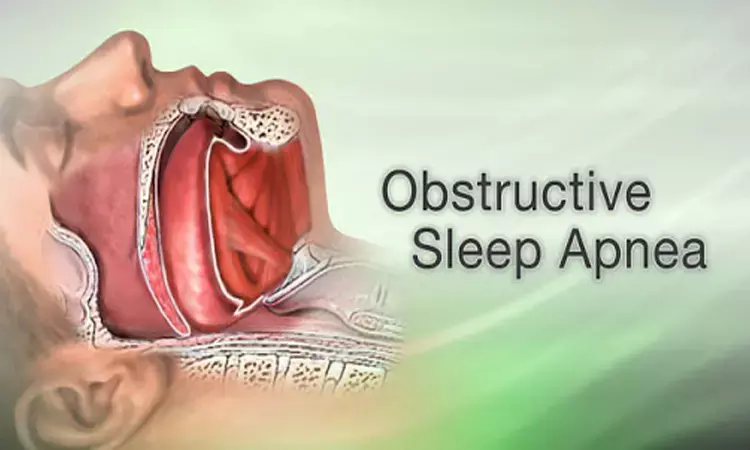- Home
- Medical news & Guidelines
- Anesthesiology
- Cardiology and CTVS
- Critical Care
- Dentistry
- Dermatology
- Diabetes and Endocrinology
- ENT
- Gastroenterology
- Medicine
- Nephrology
- Neurology
- Obstretics-Gynaecology
- Oncology
- Ophthalmology
- Orthopaedics
- Pediatrics-Neonatology
- Psychiatry
- Pulmonology
- Radiology
- Surgery
- Urology
- Laboratory Medicine
- Diet
- Nursing
- Paramedical
- Physiotherapy
- Health news
- Fact Check
- Bone Health Fact Check
- Brain Health Fact Check
- Cancer Related Fact Check
- Child Care Fact Check
- Dental and oral health fact check
- Diabetes and metabolic health fact check
- Diet and Nutrition Fact Check
- Eye and ENT Care Fact Check
- Fitness fact check
- Gut health fact check
- Heart health fact check
- Kidney health fact check
- Medical education fact check
- Men's health fact check
- Respiratory fact check
- Skin and hair care fact check
- Vaccine and Immunization fact check
- Women's health fact check
- AYUSH
- State News
- Andaman and Nicobar Islands
- Andhra Pradesh
- Arunachal Pradesh
- Assam
- Bihar
- Chandigarh
- Chattisgarh
- Dadra and Nagar Haveli
- Daman and Diu
- Delhi
- Goa
- Gujarat
- Haryana
- Himachal Pradesh
- Jammu & Kashmir
- Jharkhand
- Karnataka
- Kerala
- Ladakh
- Lakshadweep
- Madhya Pradesh
- Maharashtra
- Manipur
- Meghalaya
- Mizoram
- Nagaland
- Odisha
- Puducherry
- Punjab
- Rajasthan
- Sikkim
- Tamil Nadu
- Telangana
- Tripura
- Uttar Pradesh
- Uttrakhand
- West Bengal
- Medical Education
- Industry
Long-term periodontal changes tied to oral appliance treatment of sleep apnea

Recent research published in the Journal of Clinical Sleep Medicine has found out that inclination of the mandibular incisors increases significantly with the use of an oral appliance (OA) in patients with obstructive sleep apnea (OSA).
Studies reveal that obstructive sleep apnea occurs in about 25 percent of men and nearly 10 percent of women. Obstructive sleep apnea can affect people of all ages, including babies and children and particularly people over the age of forty and those who are overweight.
For patients with mild to moderate obstructive sleep apnea, dental appliances or oral mandibular advancement devices that prevent the tongue from blocking the throat and/or advance the lower jaw forward can be made. These devices help keep the airway open during sleep. However, there long term association is seldom reported.
Therefore, Piyush Heda and colleagues from a private practice in Vancouver, British Columbia, Canada conducted the present research with the aim to characterize the mandibular anterior teeth crown height as a marker of periodontal changes and bone loss as a side effect of an oral appliance (OA) worn for a minimum of 4.5 years.
This retrospective study conducted on patients with healthy baseline periodontitis recruited consecutive sleep apnea patients treated with an OA. Eligible participants were recalled for a follow-up visit where a periodontal exam was performed, a lateral cephalogram and dental impressions were obtained.
Clinical crown height for mandibular anterior teeth and cephalometric variables were measured and compared before and after treatment. A full periodontal evaluation was performed at the follow-up visit.
The following results were observed-
- 21 patients enrolled with a mean treatment length of 7.9±3.3 years.
- For the mandibular anterior teeth, clinical crown height did not change over the evaluated period.
- At follow-up, all the periodontal assessed variables were within normal limits, with the mean probing depth of 1.4±0.5 mm, recession 0.6±1.1 mm and Clinical Attachment Loss (CAL) 0.8±1.0 mm.
- Compared to baseline, there was a significant proclination of mandibular incisors (mean increase of 5.1°) with the continued use of OA.
- Gingival levels were maintained with clinically insignificant changes during the observation period.
Hence, the authors concluded that "inclination of the mandibular incisors increases significantly with the use of an OA in patients with obstructive sleep apnea (OSA). Positional changes in these teeth were not associated with any measured evidence of increase in clinical crown height or gingival recession."
Dr. Nandita Mohan is a practicing pediatric dentist with more than 5 years of clinical work experience. Along with this, she is equally interested in keeping herself up to date about the latest developments in the field of medicine and dentistry which is the driving force for her to be in association with Medical Dialogues. She also has her name attached with many publications; both national and international. She has pursued her BDS from Rajiv Gandhi University of Health Sciences, Bangalore and later went to enter her dream specialty (MDS) in the Department of Pedodontics and Preventive Dentistry from Pt. B.D. Sharma University of Health Sciences. Through all the years of experience, her core interest in learning something new has never stopped. She can be contacted at editorial@medicaldialogues.in. Contact no. 011-43720751
Dr Kamal Kant Kohli-MBBS, DTCD- a chest specialist with more than 30 years of practice and a flair for writing clinical articles, Dr Kamal Kant Kohli joined Medical Dialogues as a Chief Editor of Medical News. Besides writing articles, as an editor, he proofreads and verifies all the medical content published on Medical Dialogues including those coming from journals, studies,medical conferences,guidelines etc. Email: drkohli@medicaldialogues.in. Contact no. 011-43720751


